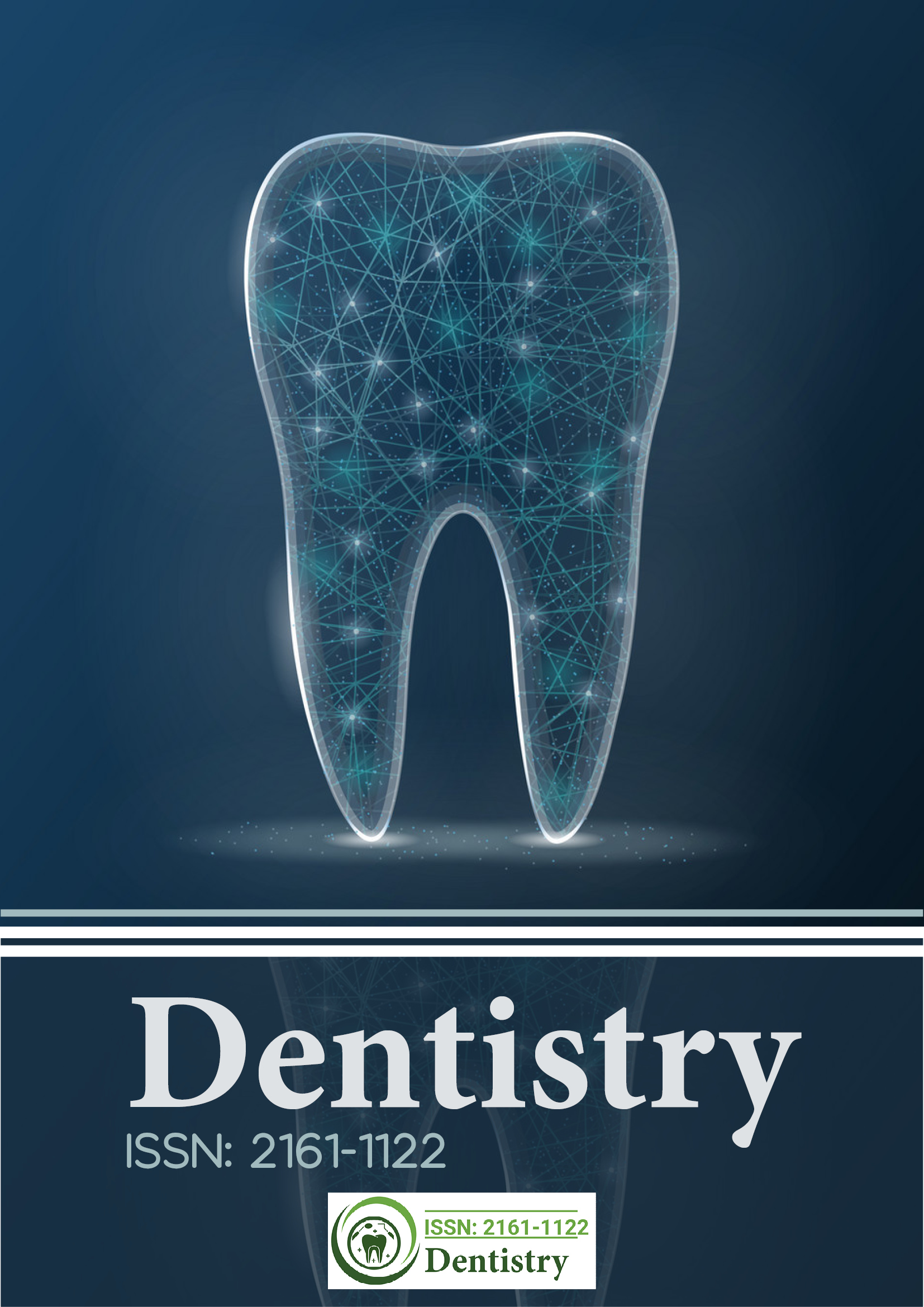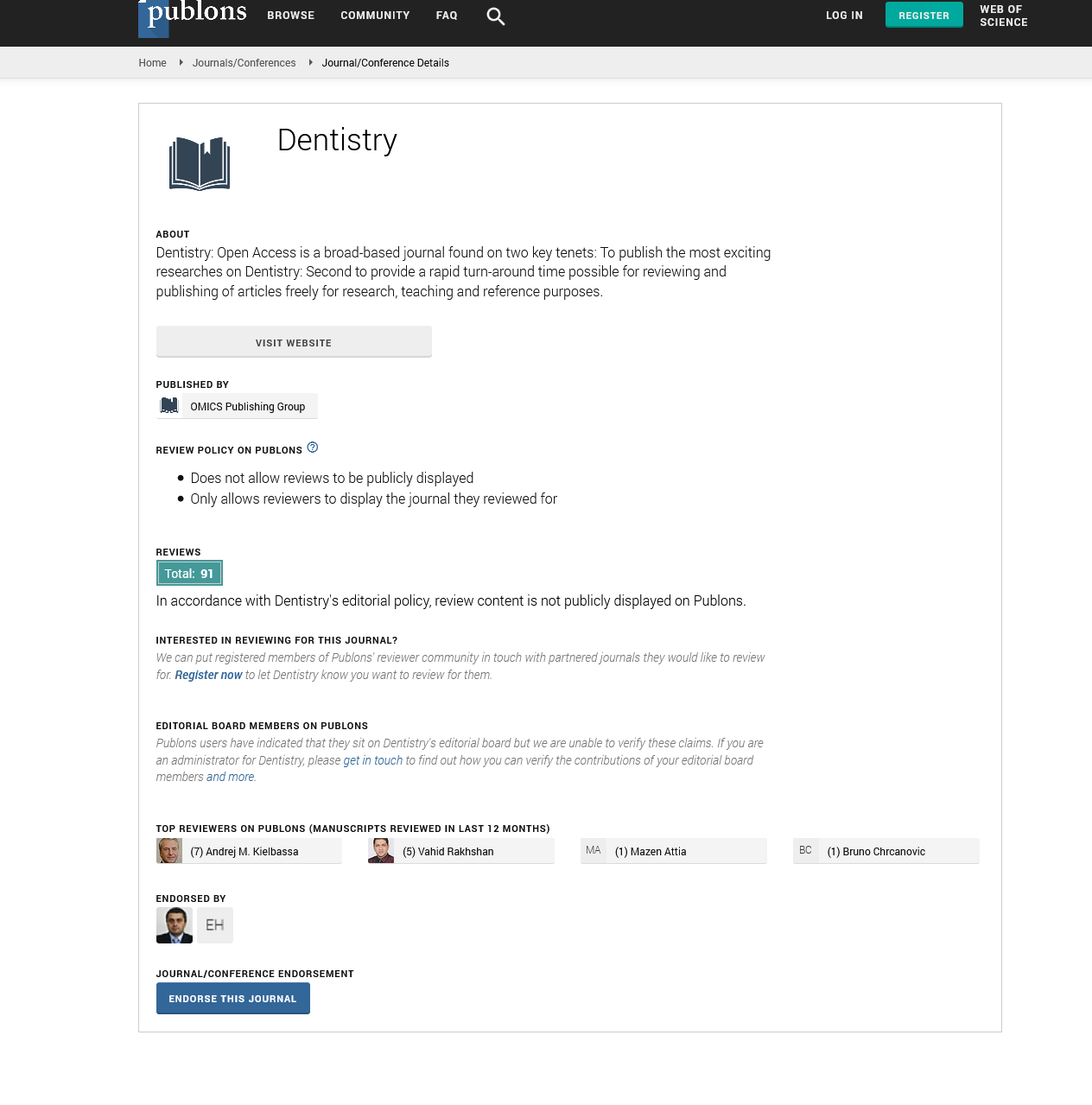Citations : 2345
Dentistry received 2345 citations as per Google Scholar report
Indexed In
- Genamics JournalSeek
- JournalTOCs
- CiteFactor
- Ulrich's Periodicals Directory
- RefSeek
- Hamdard University
- EBSCO A-Z
- Directory of Abstract Indexing for Journals
- OCLC- WorldCat
- Publons
- Geneva Foundation for Medical Education and Research
- Euro Pub
- Google Scholar
Useful Links
Share This Page
Journal Flyer

Open Access Journals
- Agri and Aquaculture
- Biochemistry
- Bioinformatics & Systems Biology
- Business & Management
- Chemistry
- Clinical Sciences
- Engineering
- Food & Nutrition
- General Science
- Genetics & Molecular Biology
- Immunology & Microbiology
- Medical Sciences
- Neuroscience & Psychology
- Nursing & Health Care
- Pharmaceutical Sciences
In-vitro comparison of dentinal tubule disinfection with aloe-vera extract, 2% chlorhexidine gel and calcium hydroxide
23rd Annual World Dental Summit
March 11-12, 2019 | Stockholm, Sweden
Rupam Tripathi
Nepal
Posters & Accepted Abstracts: Dentistry
Abstract:
Introduction: Intracanal medicaments are used as antibacterial agents to eliminate residual bacteria in a root canal after instrumentation and irrigation, to render any remaining canal content inert, to dissolve tissue and to control persistent seepage of apical fluids into the root canal system.
Aim: This study aims to compare the antimicrobial efficacy of 2% chlorhexidine gel, calcium hydroxide and aloe-vera extract as an intracanal medicament against E. faecalis.
Methods: Sixty (60) extracted single-rooted human teeth were prepared with standard method. After contaminating the canals with E. faecalis and incubated for seven days, the samples were divided into four groups (n=15). Normal saline was used as control group. The teeth in each group were treated with normal saline, calcium hydroxide, 2% chlorhexidine gel and aloe-vera extract. Microbial samples were obtained from the dentinal shavings of root and colony forming units (CFU) of E. faecalis were recorded after 24 hrs, 72 hrs and 7 days.
Result: Mean CFU were lowest for aloe-vera extract and chlorhexidine gel in 24 hrs whereas it increases in 48 hrs and 72 hrs for aloe-vera extract. Mean CFU of calcium hydroxide was found to increase at 24 hrs and decreases at 72 hrs and 7 days.
Conclusion: Antimicrobial efficacy of aloe-vera extract was found to be comparable to 2% chlorhexidine gel only for shorter duration as mean CFU were lowest for both medicaments in 24hrs. Mean CFU of calcium hydroxide was found to increase at 24hrs and decreases at 72hrs and 7 days.

